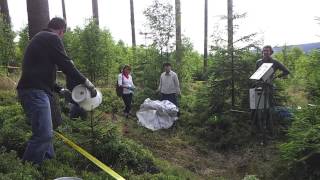Research visit 1 (Austria)
The FOREBIOM project consortium met in Vienna from July 08 - July 18, 2013 to discuss general project milestones and further actions and in specific, to learn about methods commonly used in forest soil sciences. Scientific research was jointly conducted in the lab and in the field at our experimental forest plots near Weitra in Lower Austria. Our focus was to learn from each other and to share experiences with various environmental methods. Our professional project partner Sonnenerde was visited to understand the production conditions of the biochar used for the field experiment.
In the laboratory, soil and biochar samples from our experimental plots were prepared and analyzed using pH-meter, Elemental Analyzer, ICP-OES, FT-MIR spectroscopy, X-ray diffraction and Simultaneous Thermal Analyzer (STA).
In the field, we finished the set-up of the plots and started measurements. A PP Systems Enviromental Gas monitor for CO2 was used to measure CO2 efflux from the soil from treated and untreated plots to reveal a priming effect after one week of biochar amendment. In addition, biometric measurements were conducted on selected indicidual trees which wil be regularly re-sampled to see the impact of biochar amendment on increments. PRS Plant root simulator ion-exchange resin menbranes (Western Ag Innovations Inc., Saskatoon, Canada) were installed to observe changes in nutrient and heavy metals availability with biochar addition. In addition, a HD time-lapse camera was installed to observe movement and stability of biochar particles on the forest soil surface and how long it takes until the char is incorporated in the O-horizon.
It was a very successful visit with a great atmosphere and many opportunities to experience new methods and approaches and to combine it with existing experience and utilization of synergies.
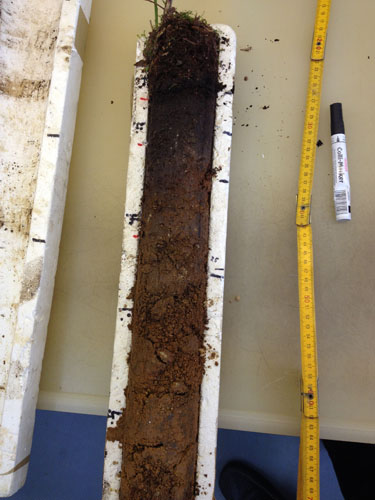
Podzolic cambisol is the typical soil reference group surrounding our experimental plots.
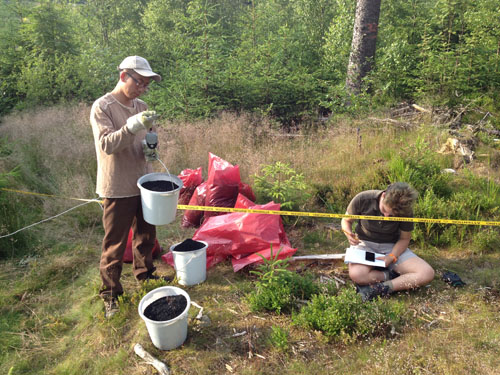
Biochar application on forest soil: exactly weighted amounts corrected for moisture content were applied on our biochar plots.
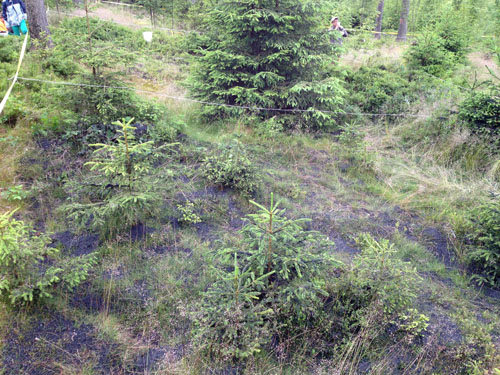
The plot in the foreground was treated with 10t/ha of biochar (dry weight).
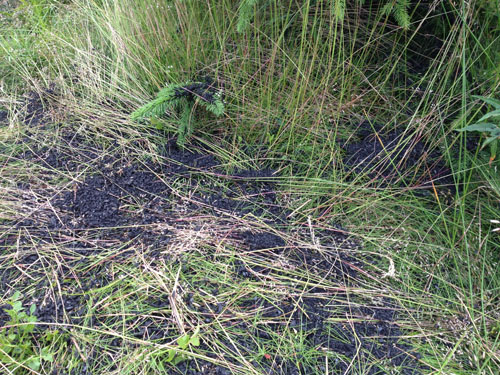
Buckets were used to spread the char evenly on our plots.
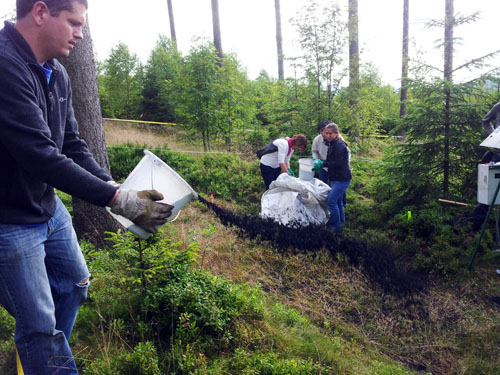
The photo above shows the camera plot wher char was applied after the installation of the camera to avoid any disturbance of the char during the set-up.
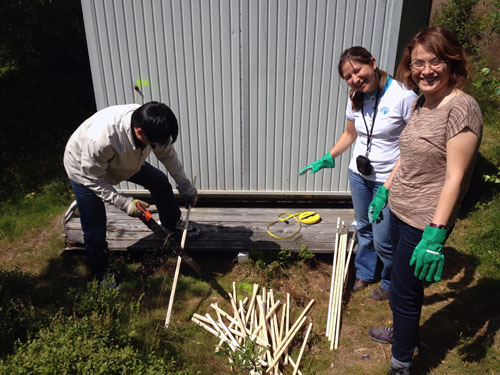
Pegs are prepared for the PRS sample locations
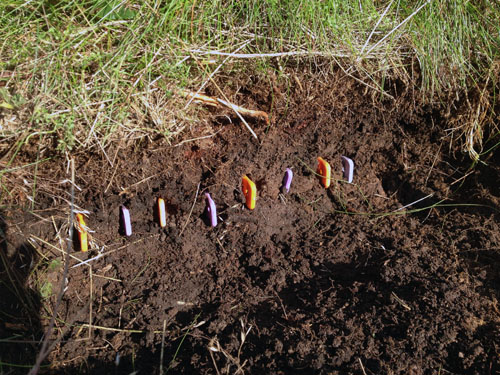
This is how we installed our PRS Plant root simulator ion exchange resin membrane probes (Western Ag Innovations Inc., Saskatoon, Canada). We preferred a horizontal installation from the side of a soil pit rather than sliding them trough the O horizon as this will contaminate the membranes with freshly applied char.
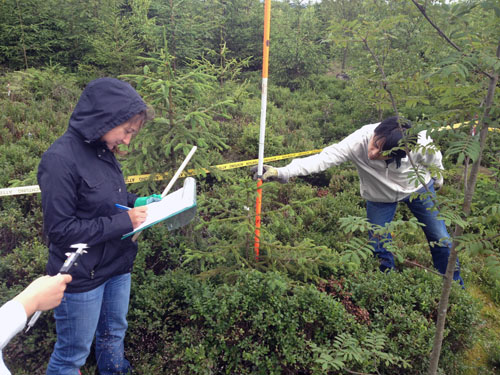
Memebrs of the project consortium are busy with biometric measurements to observe differences in increment between treated and control plots.
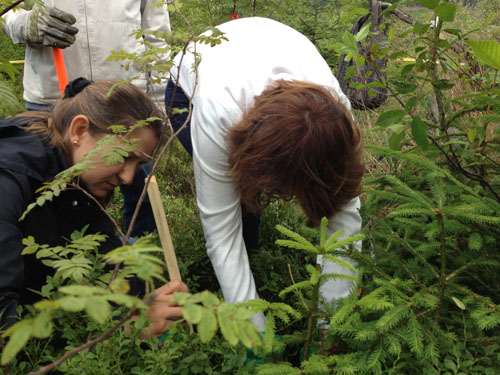
Some of these methods are physically exhausting and need lots of patience.
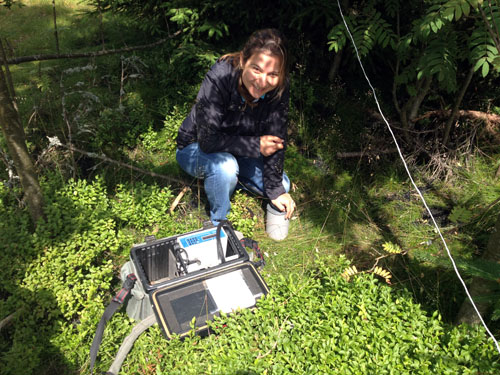
Prof. Varol proved to do an excellent job in measuring CO2 efflux from the soil, using a PP Systems EGM-4 Environmental Gas Monitor.
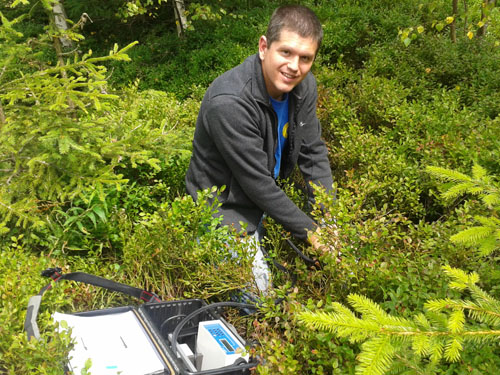
Dr. Bruckman, introducing the EGM-4 device in the field.
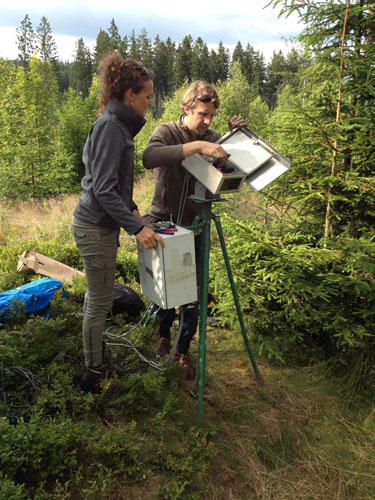
Installation of the HD time lapse camera in cooperation with Zeitraffer.tv
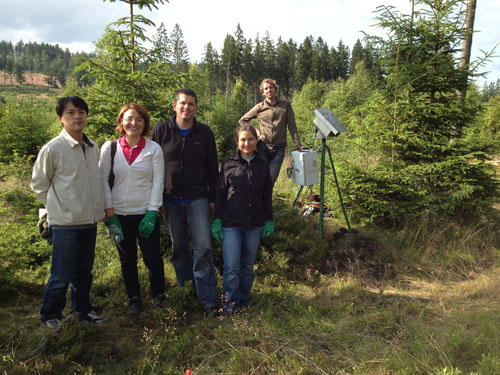
Everybody was exhausted at the end of the second day, but still smiling for a group photo.
Video of biochar application after the timelapse-cam setup.
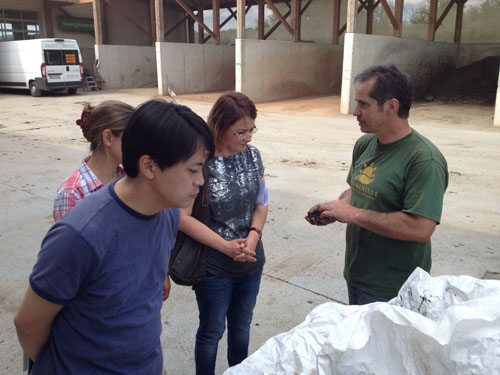
Excursion to Sonnenerde, the producer of the biochar used at our experimental plots.
